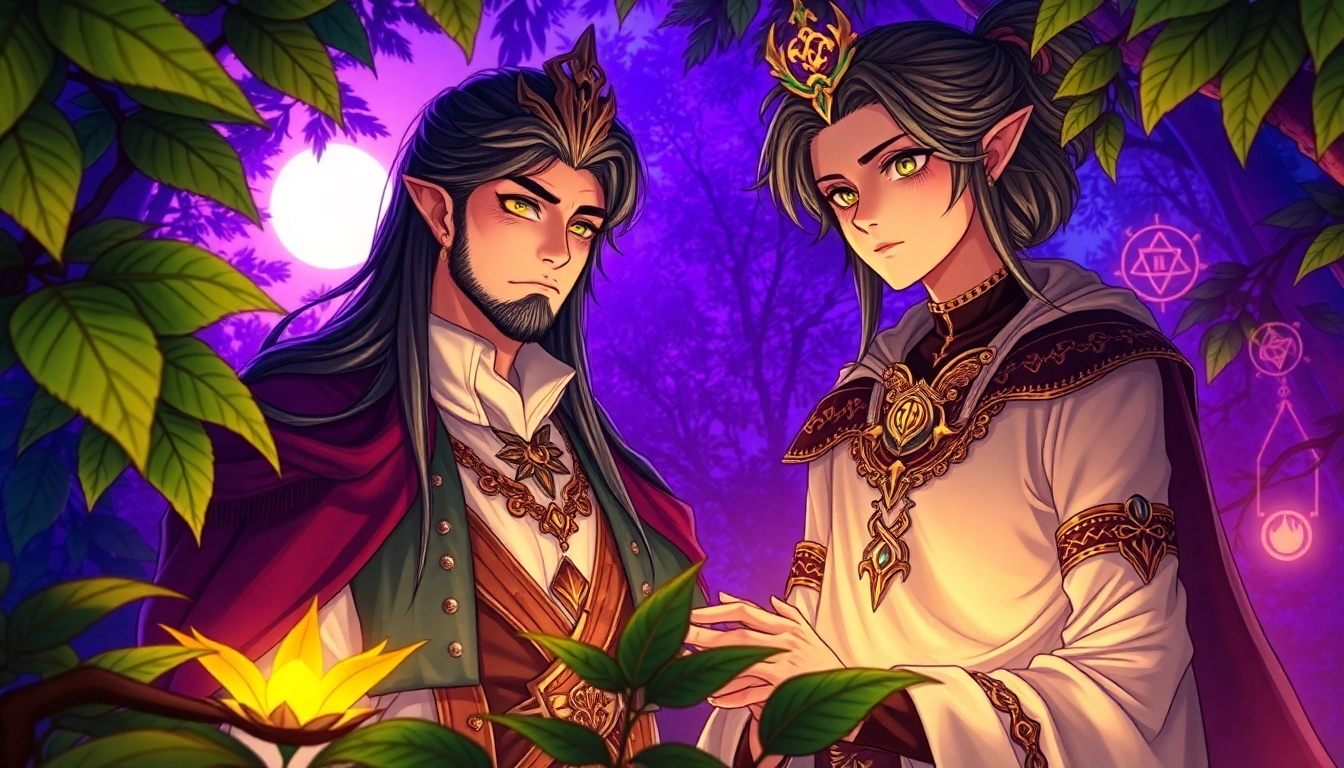Understanding the Omegaverse: Origins, Concepts, and Cultural Significance
The omegaverse is a complex and multifaceted subgenre that has garnered a significant following within fan fiction communities, especially in the realms of romance, fantasy, and speculative fiction. Its origins trace back to niche fandoms, but it has since evolved into a distinctive universe that explores themes of gender, power dynamics, societal roles, and intimacy through a unique lens. This article aims to provide a comprehensive overview of the omegaverse, delving into its history, core concepts, cultural impact, and contemporary relevance.
Historical Background and Origins of the Omegaverse
Emergence in Fandom Culture
The omegaverse first emerged in the late 2000s within the realm of fan fiction, primarily on platforms like LiveJournal and Archive of Our Own . It originated as a way to reimagine traditional romance narratives by introducing a hierarchical social structure based on animalistic traits and behaviors, particularly inspired by wolf and canine pack dynamics. Early stories often featured male characters with alpha, beta, and omega statuses, each with distinct biological and social traits.
Evolution and Adoption
Over time, the omegaverse expanded beyond its initial fandoms, such as Supernatural, Teen Wolf, and Naruto, to encompass original works and broader genres. Its flexible framework allowed writers to experiment with themes of dominance, submission, reproduction, and societal roles, often serving as allegories for real-world issues like gender inequality, sexuality, and power struggles. The genre’s adaptability contributed to its rapid growth and diversification.
Core Concepts and Terminology
The Alpha, Beta, and Omega Hierarchy
The foundational concept of the omegaverse revolves around a tripartite social hierarchy: alphas, betas, and omegas. Each category embodies distinct biological and behavioral traits:
- Alphas: Often depicted as dominant, assertive, and physically strong, alphas typically hold leadership roles and possess heightened pheromonal influence that affects others.
- Betas: Usually portrayed as neutral or balanced individuals, betas exhibit traits similar to humans without the animalistic features of alphas and omegas.
- Omegas: Characterized by reproductive and hormonal traits, omegas are often depicted as more submissive, nurturing, or vulnerable, but also capable of fierce independence.
Biological Traits and Pheromones
Biological differences in the omegaverse are a key storytelling device. For example, alphas may produce pheromones that influence others’ behavior, while omegas might have heightened reproductive instincts or vulnerabilities. These traits often drive plotlines involving mating, jealousy, and social hierarchy.
Reproductive Dynamics
Many omegaverse stories incorporate unique reproductive mechanisms, such as heat cycles for omegas or knotting behaviors in alphas, which serve as metaphors for intimacy and connection. These elements often highlight themes of consent, desire, and societal expectations.
Cultural and Literary Significance
Symbolism and Allegory
The omegaverse functions on multiple levels, serving as an allegory for various societal issues. Its portrayal of hierarchical roles and biological determinism can mirror real-world discussions on gender roles, sexual orientation, and social stratification. Writers often use the genre to explore themes of identity, acceptance, and resistance.
Impact on Fan Fiction and Creative Expression
By providing a flexible framework that blends fantasy with personal narratives, the omegaverse has empowered countless writers to explore complex characters and relationships. It encourages creative experimentation with gender, power, and societal norms, making it a vital part of contemporary fan fiction culture.
Common Tropes and Themes in Omegaverse Works
Dominance and Submission
One of the most prevalent themes is the exploration of dominance and submission dynamics. These stories often depict power exchanges, whether through physical, emotional, or societal means, highlighting aspects of trust, vulnerability, and control.
Heat Cycles and Reproductive Urges
Heat cycles, especially for omegas, are frequently used as plot devices to explore themes of desire, obligation, and choice. These cycles can lead to intense emotional and physical encounters, serving as catalysts for character development.
Pack Mentality and Loyalty
Pack dynamics, inspired by wolf behavior, emphasize loyalty, protection, and social bonds. Such themes often underpin the relationships between characters, reinforcing notions of community and belonging.
Forbidden Love and Social Taboos
Many stories delve into forbidden or taboo relationships, challenging societal norms and exploring themes of acceptance and rebellion. These narratives often highlight the tension between personal desire and societal expectations.
The Role of Gender and Power Dynamics
Fluidity and Non-Binary Identities
The omegaverse frequently challenges traditional gender binaries by blurring lines between male and female roles. Characters may exhibit traits of multiple genders or break societal expectations altogether, fostering a space for exploring gender fluidity and non-binary identities.
Power Structures and Societal Hierarchies
The genre examines power dynamics through its hierarchical roles, often critiquing or satirizing societal structures. The relationships between alphas, betas, and omegas serve as metaphors for broader discussions on authority, autonomy, and social stratification.
Consent and Agency
Modern omegaverse stories increasingly emphasize themes of consent and agency, challenging earlier narratives that depicted non-consensual encounters as romantic or acceptable. This shift reflects evolving attitudes toward respectful and healthy relationships.
The Popularity and Community Engagement
Fan Communities and Creative Platforms
The omegaverse has cultivated a vibrant community of writers, readers, and artists across platforms like AO3, FanFiction.net, and Tumblr. These communities exchange ideas, create collaborative projects, and support new authors exploring the genre.
Fan Conventions and Events
Although niche, omegaverse-related content is often featured at fan conventions, where fans share fan art, cosplay, and discussions about the genre’s themes and developments. These events foster a sense of belonging and shared purpose among enthusiasts.
Impact on Mainstream Media
While primarily a fan-driven phenomenon, elements of the omegaverse have influenced mainstream media, inspiring authors and creators to incorporate similar themes of hierarchy, gender fluidity, and complex relationships into their original works.
Controversies and Criticisms
Ethical Concerns
Some critics argue that certain omegaverse tropes, especially those involving non-consensual scenarios or rigid gender roles, can perpetuate harmful stereotypes or normalize problematic behaviors. This has sparked debates about ethical storytelling within the genre.
Representation and Inclusivity
Others point out that early omegaverse works often lacked diversity and failed to represent a broad spectrum of identities, leading to calls for more inclusive narratives that acknowledge different orientations, genders, and cultural backgrounds.
Misinterpretations and Misuse
The genre’s complex terminology and themes can sometimes lead to misinterpretations, especially among newcomers. Additionally, some use the omegaverse to fetishize or exoticize marginalized groups, which raises concerns about respectful representation.
Influence on Modern Fan Fiction and Media
Innovative Storytelling
The omegaverse has pushed the boundaries of traditional fan fiction by encouraging writers to experiment with unconventional narratives, character dynamics, and world-building. Its influence can be seen in stories that blend fantasy, romance, and social commentary.
Inspiration for Original Works
Several authors have drawn inspiration from the omegaverse to create original novels, comics, and media that explore similar themes of hierarchy, gender, and societal roles, contributing to the genre’s evolution beyond fan fiction circles.
Cross-Media Adaptations
While still niche, the genre’s themes have permeated into other media formats, including web series, graphic novels, and even tabletop role-playing games, broadening its cultural reach and impact.
Future Trends and Developments
Increased Diversity and Representation
Future omegaverse works are poised to feature more diverse characters, including different sexual orientations, gender identities, and cultural backgrounds. This inclusivity aims to enrich the genre and challenge stereotypes.
Ethical Storytelling and Consent
As awareness around healthy relationships grows, stories are increasingly emphasizing consent, agency, and respectful portrayals of intimacy, moving away from problematic tropes of the past.
Integration with Mainstream Media
Potential collaborations with mainstream creators and adaptations could introduce the themes of the omegaverse to wider audiences, fostering understanding and appreciation while maintaining creative integrity.
Technological Innovations
Advancements in AI-driven storytelling platforms, like CrushOn AI, offer new avenues for writers to craft complex, personalized omegaverse stories with dynamic characters and immersive worlds. These tools facilitate deeper engagement and more nuanced narratives.
Conclusion: Navigating the Omegaverse with Awareness and Respect
The omegaverse is a vibrant and evolving genre that offers rich opportunities for exploring identity, power, and societal roles through a fantastical lens. Its roots in fan fiction have allowed it to flourish as a space for creative expression and social commentary. However, as with any genre that deals with sensitive themes, it is essential for both creators and consumers to approach it with awareness, respect, and a critical eye. Responsible storytelling and inclusive representation can help ensure that the omegaverse remains a positive and innovative part of modern fan culture.
Understanding what is omegaverse and its significance allows fans and creators alike to appreciate its depth and complexity, fostering a community built on creativity, respect, and shared passion for storytelling that pushes the boundaries of traditional narratives.




